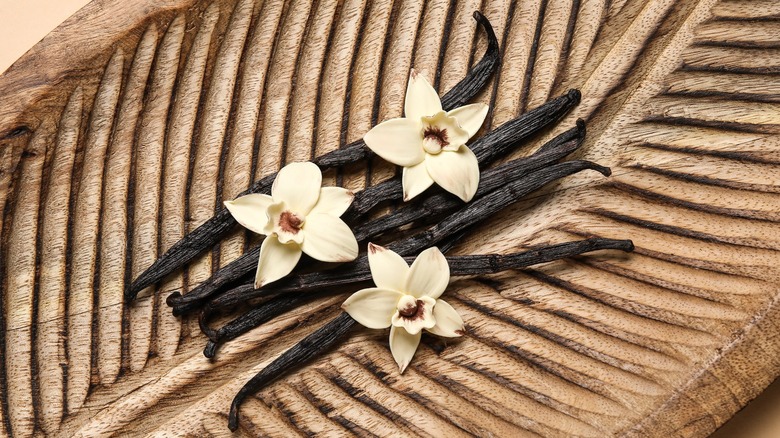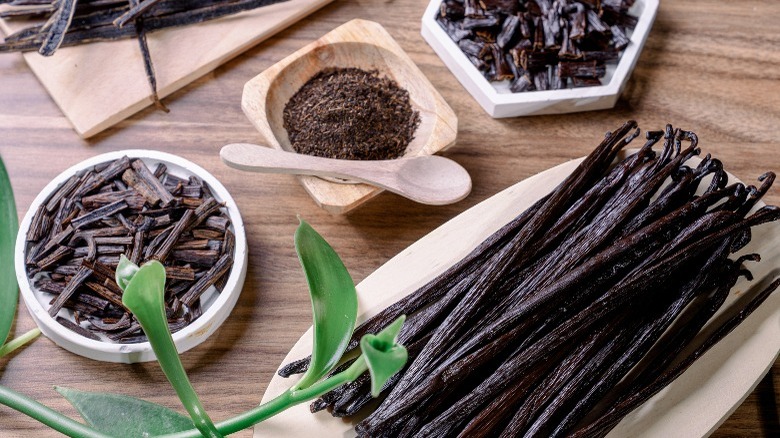Don't Throw Away That Used Vanilla Bean Pod — Reuse It Instead
Vanilla beans infuse sweets with their delicious flavor. While many bakes use the seeds within, the pod is also useful for infusing vanilla ice cream, milk, or even a three-ingredient crème brulée with subtle vanilla notes. As it turns out, you don't need to throw away those bean pods — even after you've used them. The bean itself has a significant amount of flavor and can continue to be recycled multiple times before it becomes dull. To store and reuse the beans, rinse them with water and then let them dry; once they're done airing out, keep them in a resealable bag.
There are numerous ways to use (and reuse) the pods. You can make vanilla sugar by burying the pods in granulated or confectioner's sugar. The longer you let the beans marinate within the granules, the more their flavor will diffuse throughout — but you should give it around a week at a minimum. The flavored sugar can be used in a number of different ways, from an addition to your morning coffee to a swap out for traditional sugar in your favorite baked goods to get that vanilla-y boost.
You can even reuse your bean pods to make your own vanilla extract. All this do-it-yourself requires is pods, vodka (or your spirit of choice — white rum, bourbon, etc.), and a glass jar for steeping. Typically, the extract is ready after a few months, but because the pods are used, you may need extra.
Beans allow for greater flavor variety
While extract and paste are useful varieties of vanilla to have on hand, using (and reusing) those bean pods allows you to experiment with a wider range of flavors. In some cases, the beans outweigh extract and paste for the ultimate boost as their fragrance adds a deep flavor, and the seeds provide an aesthetically pleasing visual element to light-colored sponges or ice cream.
In terms of classification, Grade A beans are meant for baking and cooking while Grade B beans are best used for extract. Vanilla beans are grown in a number of locations worldwide. What we now call Mexico is actually where the vanilla bean plant originated from. Mexican vanilla has notes of spice, and is stronger and smokier than other types — this is good to use when vanilla is the star of your dish. Madagascar vanilla comes from Madagascar, near the Mascarene islands in the Indian Ocean, and, thanks to its buttery notes, is an all-purpose vanilla. Tahitian vanilla is fruitier than the other varieties, containing less vanillin, the compound that provides its telltale taste. Due to this, it is better used in ice creams or cold goodies that won't strip its flavor with intense heat.
If you don't have access to beans, vanilla powder, extract, or paste are good alternatives. For recipes that call for beans, one is typically equal to one tablespoon of extract or paste while only half a teaspoon of powder is equivalent to one bean.


